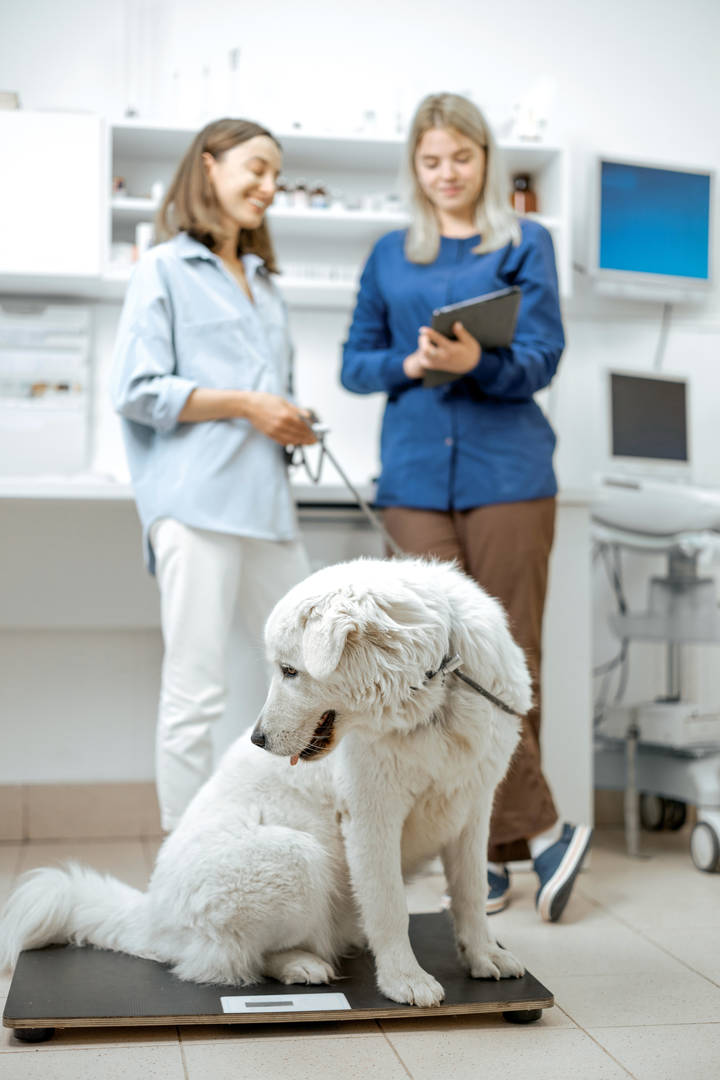Tips for dealing with rude veterinary practice clients
By MWI Animal Health
Understand the roots of outbursts, negative effects on staff, and coping strategies

Encounters with rude clients continue to spike at veterinary practices. In response, many teams started firing clients at unprecedented rates. This is no doubt necessary, sometimes. For other scenarios, though, it's important to ask what's really at play and the best way to handle it.
Possible roots of rudeness
Everyone brings past experiences and expectations into interactions that can result in rudeness.
Triggers. Meredith Gordon, LCSW, uses creative work to help others recover from a variety of challenges. She explains that veterinary situations may trigger past hurts. "Something about the current situation — which may be completely unlike the original situation — rattles something deep within that may have been dormant, dismissed, minimized, or pushed aside. It may not even have to do with the care of an animal at all."
Beliefs. After more than a decade of connecting with dog sports competitors, Kathrine McAleese, PhD, a coach and author, better understands why people stretch themselves financially and otherwise for their dogs but don't do the same for themselves. They tell her "because the dog deserves it." She says, "That's so depressing because the implication is that the human does not." This makes people more likely to speak up for their pets in ways they never would for themselves, including stirring up stronger emotions and potentially crossing the line into rude territory.
Plus, the person's low self-value may perceive any glitches in their pet's care as additional reasons for their low self-esteem, which hurts and may result in people lashing out.
Unwelcome surprises. Debbie Boone, CVPM, a veterinary communications consultant and speaker, says unwelcome surprises also cause outbursts — even from loyal veterinary clients after receiving a reminder postcard. She says, "They call the office and are blindsided by the fact that they can't get in for X amount of days, weeks, or possibly even a month, depending on what the situation is. That shock and surprise sets them off."
Review culture. "Everywhere we go now, we are asked to rate or give feedback or comment or post or give an opinion about the care given," Gordon says. "I think the pressure of worrying about ratings and social media comments can add undue stress and make some feel that they need to be performative rather than authentic."
Rudeness begets rudeness
Customer service researchers at the University of British Columbia call the contagious nature of toxic encounters incivility spirals. Plus, neuroscience explains that the brain seeks things upon which we focus. If you constantly notice negativity, the brain points out more of it. Boone explains that's how individuals and teams spin off into "and another thing!" rants and expecting the worst from everyone.
McAleese suggests thinking of it as proximity, not something personal. "They're lashing out, and the veterinarian just happens to be in the splash zone," she says.
She adds that outbursts become more likely if people feel "any sense of self-recrimination," such as not listening to their gut, putting off appointments for financial reasons, or making dangerous mistakes.
Negative effects of rude clients
Rude clients aren't new. The reasons they complain aren't new either. In 2021, Boone surveyed veterinary practice managers about the most common gripes and says, "I have been dealing with clients for 30 years, and the complaints never change. The only changes [during the pandemic] were 'I don't want to wear a mask' and 'I want to come into the building.'"
The frequency and vitriol from rude clients, however, is increasing, with negative effects on practitioners and veterinary teams. When asked, 77.2 percent of internal medicine veterinarians report that client complaints negatively affect their job satisfaction. That's not good for anyone's mental health.
It's also bad for business, including:
- Damage to team morale and self-confidence
- More absenteeism
- Drops in performance
- More bickering and turnover
- Damage to the practice's reputation
Empowering staff to handle rudeness
The following types of systemic strategies empower veterinary teams to handle rude clients calmly and consistently.
Beef up customer service training. Boone says, "Most of this has to do with better customer service training. Because when we have to say no to people, particularly when we're setting boundaries, make it sound like a yes. We want to say, 'I can't do that,' but instead say 'Here's what I can do. Here's what's possible, or let me do this for you …' And, then people are much more likely to kind of roll with it."
Know your own triggers. Figure out which comments or types of complaints make you defensive and develop strategies to defuse them. Boone says, "That comes with not letting that limbic brain go into reactive mode and keeping that smart brain engaged. It takes practice and self-control."
For example, if your practice charges more than other nearby veterinary providers, know the value of services offered and the added value the team brings to the process. If someone comments about paying for a recent expansion or new equipment, Boone often replies, "You're probably right, and we appreciate that … In my experience, you get what you pay for. I've bought cheap stuff and had it fall apart, and I bought good stuff, and I still have it, and we're good stuff."
Institute a buddy system. When possible, team up two staffers for patient and client encounters. Gordon says, "It helps to feel less alone, which can be calming and beneficial in and of itself."
Establish let-it-go rituals. Each person likely needs their own way to set difficult encounters aside, such as:
- Taking a break, having a healthy snack, or stepping outside
- Sharing an agreed-upon phrase or inside joke to acknowledge what happened
- Turning on a positive playlist in the back of the hospital
Do individual check-ins regularly. Boone says, "Because some people will shake it off, and other people, especially the ones who are probably more involved in it, may struggle, so check in several days after and ask, 'Have you been able to let this go?'"
McAleese suggests thinking of rudeness as proximity, not something personal. "They're lashing out and the veterinarian is in the splash zone."
Coping with rude clients
From their perspectives in veterinary practice, social work, sociology, family therapy, and even theology, Boone, Gordon, and McAleese offer these tips on coping with rude clients in the moment.
Use this mantra. Gordon suggests saying to yourself in your head, "This is likely not about me," which:
- Avoids setting up the dynamic of me versus them
- Gives you time to reflect
- Creates "emotional distance from the initial discharge of sarcasm or anger"
Be present. Gordon says some people avoid responding angrily to anger and find ways to stay present without internalizing the complaint or emotion. She explains that this allows the person behaving rudely to "feel their own feelings instead of trying to push it outside 'onto' someone else" and can "change the course of the encounter for the better."
McAleese also suggests cultural norms such as offering a cup of tea and "holding space" for someone to release pressure because sometimes "it's not even necessarily about solving something."
Harness curiosity. Boone recommends being "curious, not furious" in tense conversations with clients and asking them for solutions. She says, "A lot of times when you ask questions, you put the onus of solving the problem back on the customer."
What if they answer with something unreasonable? Boone suggests saying, "You know, I was afraid you were going to ask me something that was not possible for me to do." If that doesn't spur a shift in attitude or suggested resolution, then you may have to say, "I'm really sorry that we're not going be able to solve this together, unless there's some give on your part. So, what can we do? Can we do this instead? Will this work for you instead?"
Lead your time together. In the face of complaints about long waits, Gordon suggests acknowledging the wait and moving forward with professional, efficient intent by saying something like, "We are inordinately busy, and I know you have been waiting. Let's make the most of the time we have together."
Don't tell people to calm down. "'Calm down' doesn't help because it is dismissive," Gordon explains, "but 'I know this is hard, and I can understand your worry. I've been there, too' can have a calming effect because it is humanizing and bypasses anything that feels authoritarian."
Framing the best stories
Boone thinks of client communications and customer service like telling stories where the hero prevails in the end. Those stories teach people how to behave. They demonstrate how much you care. They bond people to your practice.
Yet, she says, "In veterinary medicine, we make the mistake of thinking that either the animal is the hero or the veterinarian is the hero when the hero of the story is the client. And when we don't put the client as the hero of the story, then we're not telling it so that they will listen. They want to be the person who saved the animal. They want to be the person who did the wise thing and went to the wise counselor and won."
Help them be that hero through proactive communication that explains how things work, alerts them to new challenges or changes, and helps them become effective (and understanding) partners in animal health. When you communicate to avoid surprises and miscommunications, you also set realistic expectations your team can meet consistently. Prevent more drama now. Cope less later.





